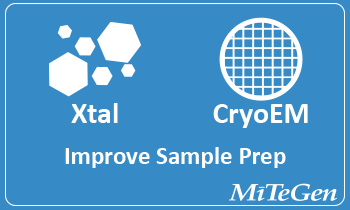issue contents
April 2021 issue

Cover illustration: A novel clostridial cell-surface hemicellulose-binding CBM3 protein - the unique CBM3-Clocl_1192 of Hungateiclostridium clariflavum [Hershko Rimon et al. (2021), Acta Cryst. F77, 95-104].
research communications
The structures of cell-surface family 3 carbohydrate-binding module proteins from Clostridium thermocellum (CtCBM3-0271) and Clostridium clariflavum (CcCBM3-1192) are reported. Both exhibited binding to xylan rather than cellulose, which is explained by them lacking the required number of binding residues in their cellulose-binding strips. CcCBM3-1192 does not contain the calcium ion considered to play a structural stabilizing role in the CBM3 family, leading to conformational changes in two loops of its structure.
In this report, the 3.0 Å resolution structure of the GTP-binding protein-like domain (GLD) of AGAP1, which is an important part of AGAP1 that participates in the recruitment of protein partners and in activity regulation, has been obtained. The overall structure of AGAP1 GLD exhibits the highly conserved functional G1–G5 loops and is generally similar to other characterized ADP-ribosylation factor GTPase-activating proteins, implying that AGAP1 could be classified as a type of NTPase.
PDB reference: GTP-binding-protein-like domain of AGAP1, 7eb6
In the present study, mouse hemoglobin (Hb) was purified and crystallized at a physiological pH of 7 in the orthorhombic space group P212121; the crystals diffracted to 2.8 Å resolution. The primary amino-acid sequence and crystal structure of mouse Hb were compared with those of mammalian Hbs in order to investigate the structure–function relationship of mouse Hb.
PDB reference: mouse hemoglobin, 3hrw
Open  access
access
 access
accessThis study reports the engineering and crystal structure of a monomeric variant of the hematopoietic cytokine FLT3 ligand that is able to bind to the cognate receptor. Such a tool can be used to interrogate the assembly mechanism of extracellular complexes of FLT3 and to further explore its therapeutic targeting.
PDB reference: engineered monomeric FLT3 ligand, 7nbi
methods communications
Neutron diffraction data collections from crystals of Neurospora crassa LPMO9D under ascorbate-reduced conditions at cryo-temperature and under low-pH conditions at room temperature are presented.


 journal menu
journal menu


















![[publBio]](/logos/publbio.gif)





